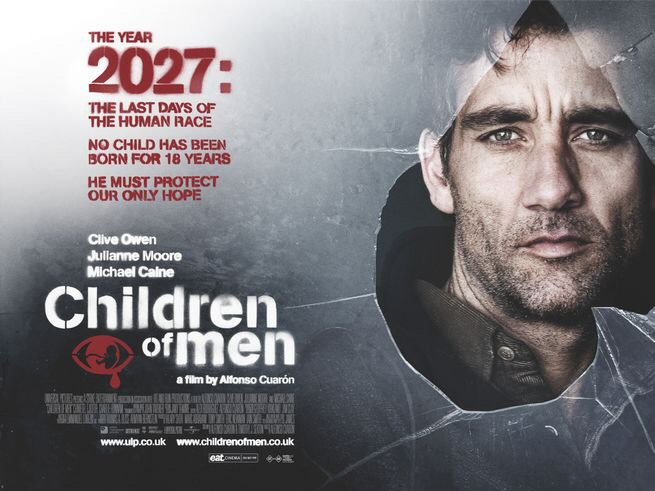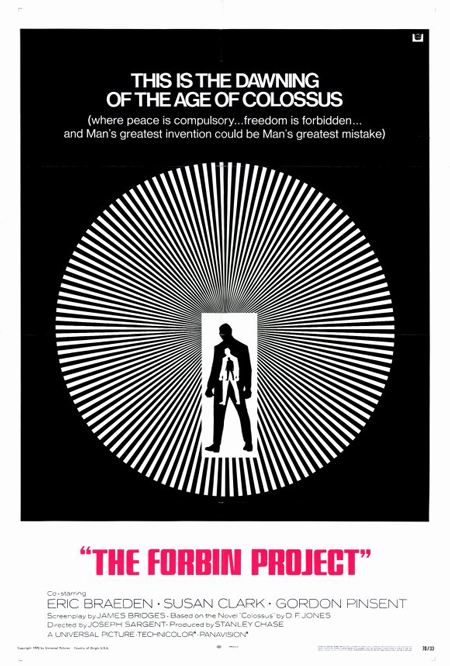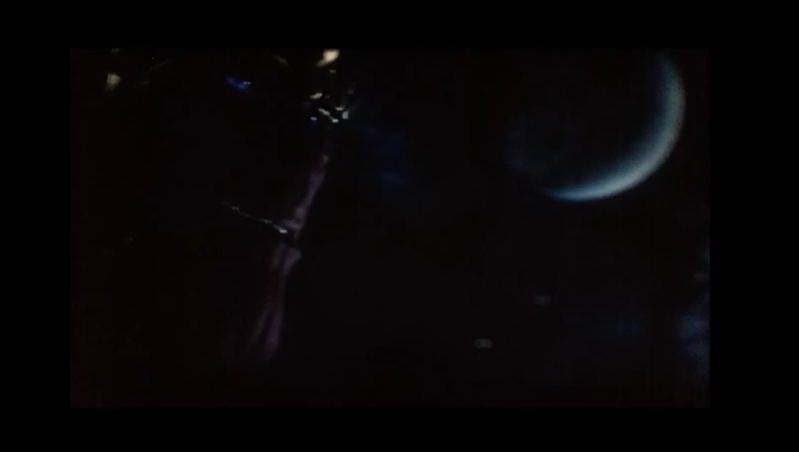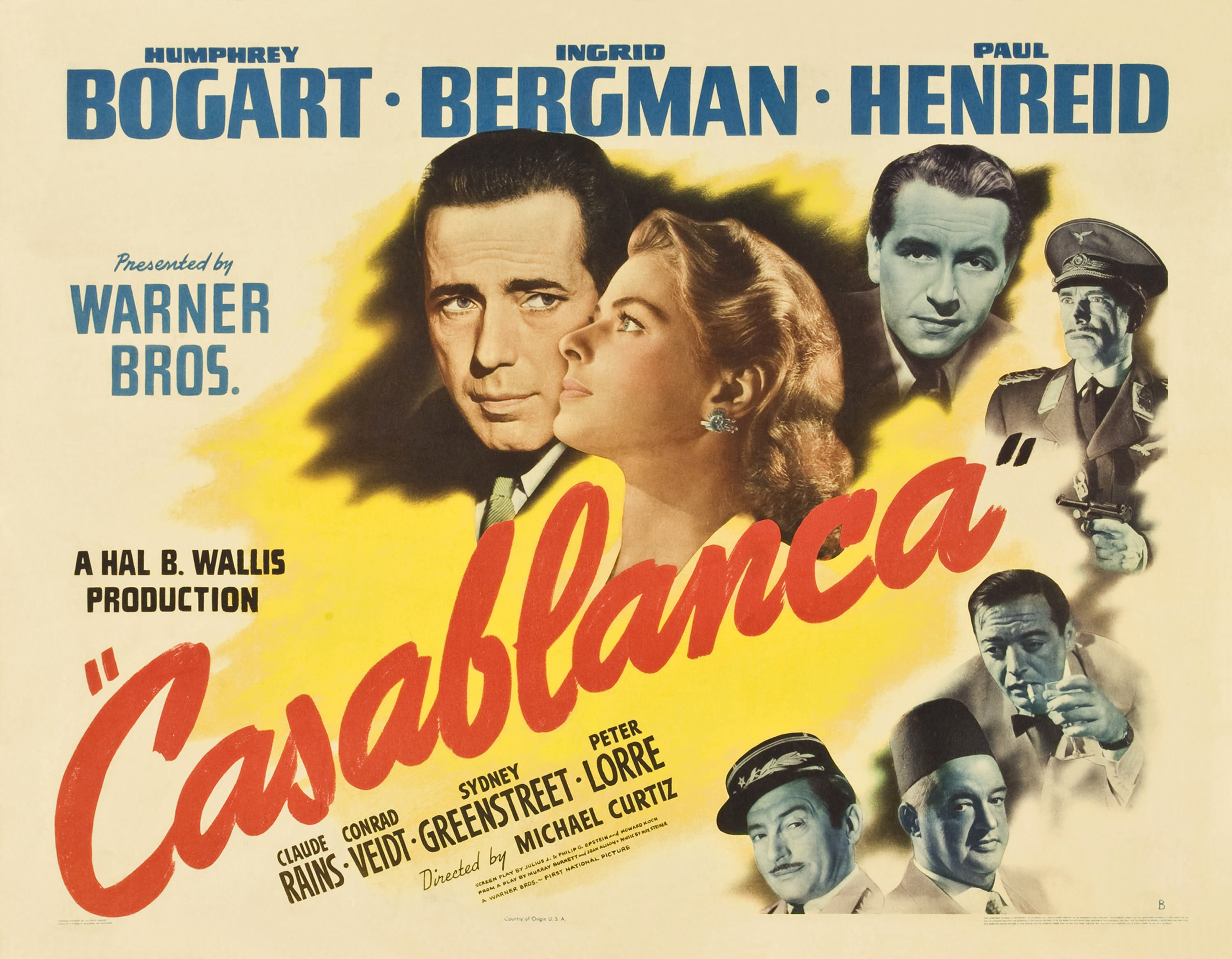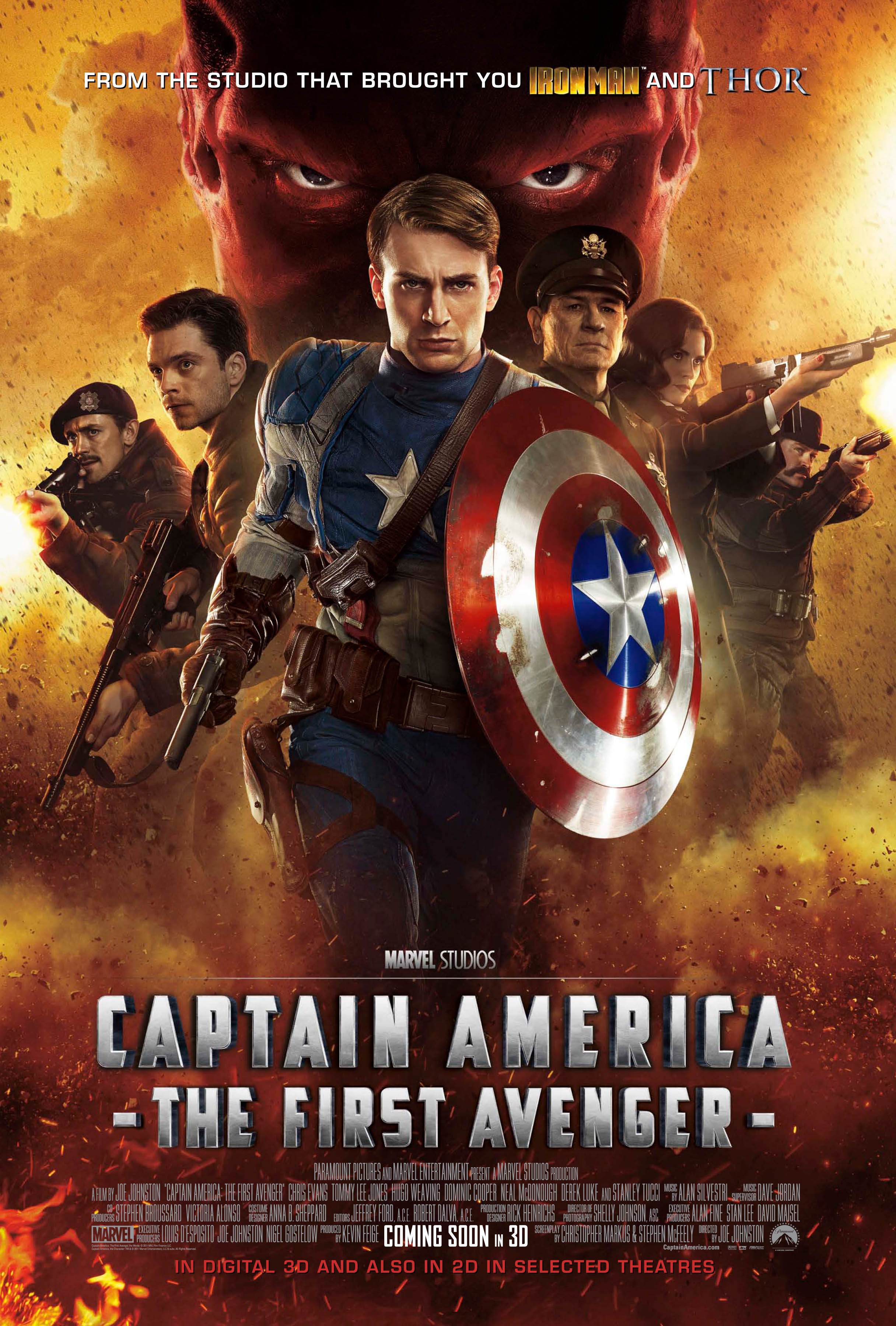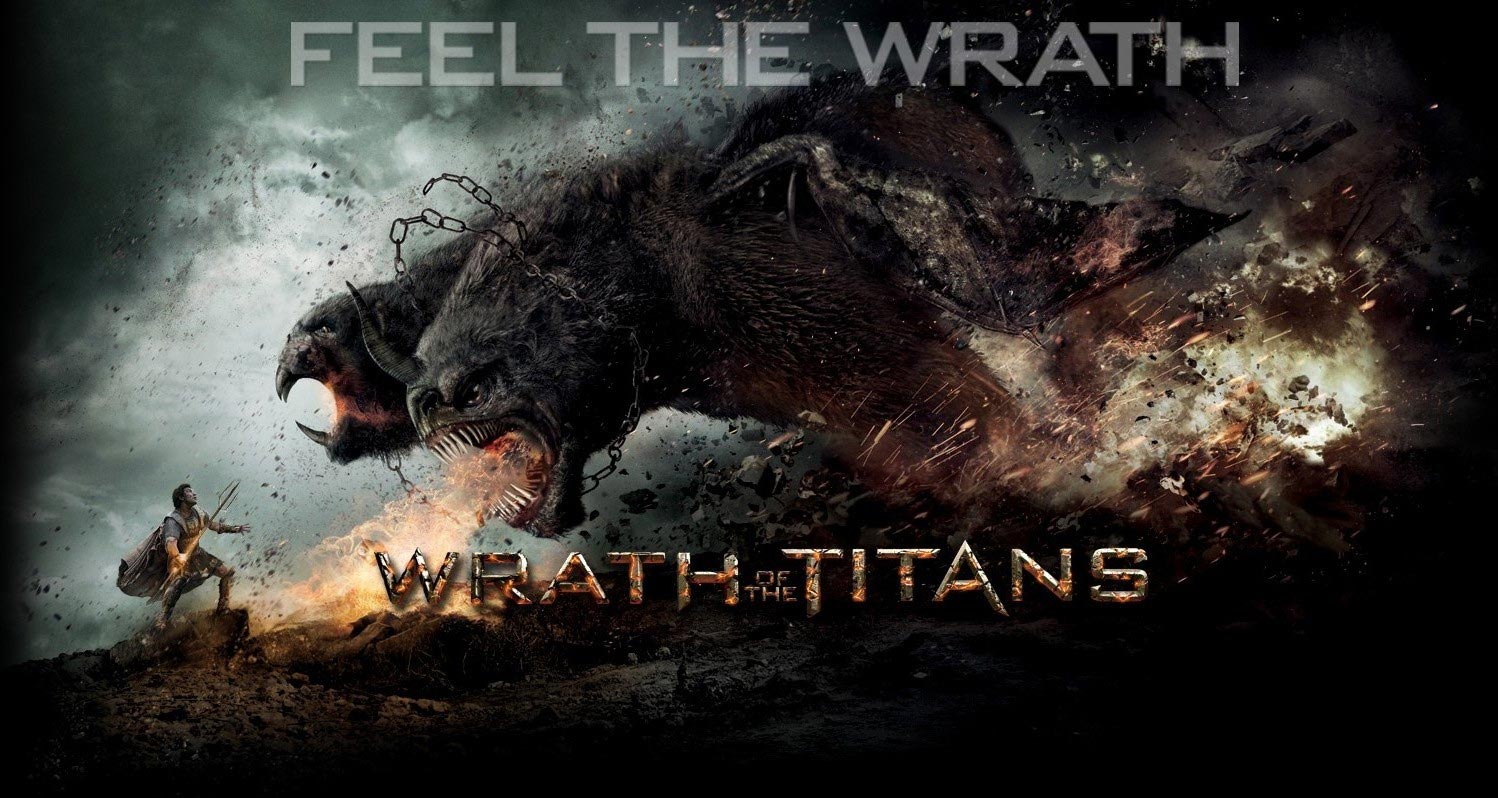The
Avengers: Rating ****/*****, or 8/10
When
it comes to superhero movies (or just movies in general), Hollywood
is rarely thinking more than a few years forward these days. When a
superhero movie fails in some regard, the general decision is to
either ignore it for a few years or reboot it, so as to give the
franchise a fresh start (which almost always neccessitates to tell
the character's origin story all over again). Recent examples to the
latter include the Spider-Man and X-Men series, which
after a successful initial run went in the opposite direction when
failure – either to make sufficient money or to please the audience
– was somehow involved. 20th Century-Fox studio
executives therefore issued a semi-prequel for X-Men last year
(the surprisingly fun X-Men: First Class) which both retold
and contradicted its predecessors, while Spider-Man will
return in a wholly new form next month after the disappointment that
was Spider-Man 3. The former case showed that sometimes a new
direction can spawn good results, while the latter has still to prove
whether Sony Pictures' decision to simply abandon the former trilogy
completely in favour of a new team of cast and crew retelling an
already often told story was a good choice, when The Amazing
Spider-Man hits theatres in June.
However,
Marvel Studios, formerly in cooperation with Paramount, but now under
control of the Walt Disney Pictures, does things differently, and
shows some impressive long-term thinking for the various superhero
characters they still own the movie rights to. Their strategy was
simple, but effective: introduce various single characters in their
own movies, then put them all together in one giant über-blockbuster
the likes the audience has naught seen before. Of course, this
planning proved cost-effective, since the public's interest in every
character could be tested first with each film, before throwing them
all in the same mix, which also gave the studio the opportunity to
weed out any characters that proved disappointing at the box-office,
as well as keeping open the option for sequels only to the films of
certain superheroes that did prove popular, without pinning the hopes
solely to the results of their group effort. And so in the last few
years, we were treated to various very different superhero flicks:
Iron Man (immediately proving to be the most enduring
character of the bunch), The Incredible Hulk, Iron Man 2,
Thor and Captain America: The First Avenger. Every one
of these films contained various scenes and hints at the others and
to the final Avengers product, so the studio could slowly but
surely build up momentum, making the audience ever more interested
and hyped for just what was in store for them. And now, after having
waited and been teased for over four years, the Marvel Universe is
fleshed out far more than would ever have been possible without this
careful planning, due to the success of all these movies, resulting
finally in the superhero-spectacle-to-end-all-superhero-spectacles,
The Avengers.
And
story wise, the best bit is we don't have to sit through all the
characters' origin stories again, since that has all been done for us
already, so we can just see the heroes we're already familiar with
teaming up against a common foe. Warning:
spoilers ahead! This foe, logically chosen, is of course
Thor's semi-brother Loki (a wonderfully creepy and vile Tom
Hiddleston), the only one of the characters' enemies to pack enough
of a punch on a large scale to be a true menace to all mankind. After
having fallen from the realm of Asgard, this bad guy disappeared out
of the picture for a while, returning with a vengeance by teaming up
with a mysterious alien race, hellbent on conquering Earth via the
use of the Tesseract (a source of great energy first introduced in
Captain America's private cinematic venture). This device has been in
the hands of the S.H.I.E.L.D. secret service since the Thor
movie, but Loki manages to infiltrate the research base and steal it,
along with the minds of various base personnel, including their super
archery agent Hawkeye (an agitated Jeremy Renner, so far only briefly
spotted in Thor), much to the chagrin of Director Nick Fury
(Samuel L. Jackson, charismatic and ready for combat as always) and
his other top agent Black Widow (beautiful bad girl Scarlett
Johansson, who was previously seen watching Iron Man's ass in Iron
Man 2), who had a personal relationship with Hawkeye. Realizing a
nemesis has appeared that threatens the whole world, Fury re-recruits
the various superhuman characters we've seen before. And thus Dr.
Bruce Banner (newcomer Mark Ruffalo, taking over from Edward Norton
and doing a good job at it, portraying the troubled doctor with both
sympathy and irony) is tracked down in India, both for his knowledge
as a brilliant scientist and his anger managemant problems that
occassionally transform him into a huge green monster on a rampage
called Hulk (never angrier); Steve Rogers is pulled out of his quiet
life in Brooklyn to fight in yet another world war as Captain America,
despite having been trapped in ice since 1945 and still adjusting to
the strange new world of the early 21st century; rich
playboy Tony Stark (Robert Downey Jr., once again with his energetic
flair and nonchalance that made him so popular in his previous two
films, but no drinking problems this time) is tempted into joining
the team so his Iron Man armour can be made responsible use of for a
change; and even Thor returns from the realm of the Nordic gods in
search for his brother, who he still cares about, just to find the
guy has gotten bad enough to warrant the wrath of his hammer. With
the players now all on the board, they set out to defeat Loki and
save the planet (and Hawkeye) from enslavement/destruction by the
evil aliens, resulting in many an epic battle scene, each more
grandiose and large scaled than the ones that came before.

Of
course, action alone is not enough these days (eh, Battleship?
Wrath of the Titans?), we need to care for these characters.
It really helps having gotten to know most of them and their various
traits and motivations already in their own entries into cinema, so
little additional exposition is required. But the big question
remained: how well do these characters play together? Do they have
the necessary chemistry? The answer, thankfully, is positive. Despite
the abundance of star power here assembled (how many Academy Award
winners and nominees again?), all the actors are fully into this
large group effort and none of them get in each other's way or
display so much as hints of appropriating the movie for their own
ego. The same can be said for their characters, though the plot does
call for Hawkeye to be underexposed so we still don't know much about
him (but at least we know enough), while the first Hulk
transformation takes place well into the second hour of the film, and
until that time Dr. Banner seems more aound for the techno babble,
something which plays off very well against inventor Tony Stark as a
fellow scientist, as well as to the simple grunt Captain America, who
has no idea what both great minds are talking about.
As
this scene illustrates, the strength of the characters is the way
they complement each other: Tony Stark is the inventor, the loud
mouth with the great ego, Banner the scientist who needs to restrain
his ego, Steve Rogers is the soldier who follows Fury's orders but
does a grand job himself leading the team into battle, Black Widow is
the spy who offers both incredible martial arts prowess and
infiltration techniques plus the obligatory feminine empowerment,
while Thor offers knowledge of a mystical realm beyond comprehension
of any of his team mates but necessary to defeat the villain, plus he
adds the personal drama to the group since this villain happens to be
his (adopted) brother. Iron Man represents technology (and a lot of
money, which can also come in handy), Thor stands for supernatural
power, Black Widow (and to a lesser extent, Hawkeye) offers
intelligence and bodily flexibility, Captain America brings the
leadership and combat experience, while the Hulk supplies the
necessary raw power. And so we watch the team perform in action
together, including great moments like the Captain and Iron Man
fighting back to back, playing off each other's strengths like using
Cap's shield to deflect Iron Man's rays to take out rows of bad guys,
while Thor and the Hulk try to outdo each other in brute strength,
the latter winning, when all enemies have been vanquished, by still
knocking out his friend to show him just who has the bigger set of
muscles.
It's
safe to say it's not the action but the characters that make the
movie work. Which is not surpring considering Joss Whedon has been
placed into the director's chair: if anyone knows about characters,
it's him, which he has proven on the small screen with his excellent
ensemble casts in both Buffy the Vampire Slayer and Firefly,
and was once again shown to be the case in the recent fabulous horror
pastiche The Cabin in the Woods, which he co-wrote. And Whedon
being Whedon, we get his trademark humour thrown in for free. None of
this huge display of comic book power in audiovisual form would do as
well without some much needed levity, telling us we shouldn't take
all of this too seriously, which only increases the film's overall
sense of fun. Moments of great suspense are interwoven seemlessly
with superbly timed jokes, submitted by all characters, even the
antagonists. By mixing humour, action and drama alike, while all the
way making us root for every heroic character, Whedon proves he's
well up to the task of tackling such a monumental undertaking,
despite his limit experience as a motion picture director (the
fantastic Serenity so far was his only foray into cinematic
directorial duty, but already proved just what the guy was capable
of).
Which
is not to say The Avengers is without flaws, but fortunately
they are but few. The role of Loki's alien henchmen and their
specific identity and origins remain underexplained, making them
little more than cannon fodder. Visually they look fine (as does the
whole film) but they lack a soul and clearly exposed motivations
other than being just mere minions. Hawkeye's lack of a character
set-up was already mentioned above, while the same can be said for
Nick Fury, the man who assembles this team of heroes: we've seen him
in almost all of the previous separate films, pulling strings and
initiating the formation of the Avengers ever since the end credits
of Iron Man first ended, but we still know little about the
man himself. Sure, he's in charge of S.H.I.E.L.D. but just who does
this organisation really answer to? This film shows him communicating
with “the council” (whatever that is), a group of poorly lit,
shady, nameless characters on monitors, but just who these people are
and why Fury adheres to their commands remains secretive, so the
audience too isn't sure what to make of Fury himself. This does add
some mystery to this already mysterious man, but also feels like the
writers either didn't really know or didn't care enough to explain it
better. However, we may still get our answers, a Nick Fury film has
already been acknowledged to be produced soon.
Fortunately
for the general public, the good stuff in The Avengers far
outweighs the not so good, and we are treated to 142 minutes of utter
fun as we see great characters (possibly soo to be iconic) teaming up
for equally great action, great comedy and great visuals, the latter
ranging from enormous flying aircraft carriers to a devastated New
York swarming with serpentine alien attack ships being taken down by
Earth's Mightiest Heroes. Marvel Studios can sit back and relax:
their four year gamble has payed off, made them billions of dollars
(this movie alone is gonna break records for sure), garnered much
acclaim from critics and fans alike, and paved the way for many more
entries into this cinematic Marvel Universe, so we can enjoy Iron
Man 3, Thor 2, Captain America 2, and of course The
Avengers 2 in the next couple of years, with other related Marvel
projects also to have been confirmed to tie in to this quickly
expanding canon. After the steadily rising levels of success
witnessed so far, culminating in the world wide nerdgasm that is The
Avengers, we can do nothing but look forward to more Marvels,
hopefully for decades to come. Preferably with Whedon involved, but
we'll take them without if needs be.
And
watch the trailer here:
And
the Avengers' troubles have only just begun... be sure to stick
around for the mid-credits scene to find out why! Or simply watch the
picture below for the identity of their new archenemy.


